November 2024
Where to find the must-see exhibits for AV lovers
Fascinated by the world of flight? We present five out-of-this-world aviation museums that are perfect for av-geeks – although you don’t have to be a plane spotter to appreciate their spectacular exhibits
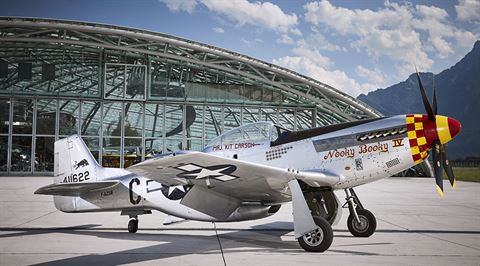
Hangar 7, Salzburg, Austria
This Red Bull-owned museum’s collection includes Alpha Jets flown by the Flying Bulls display team and a North American P51D Mustang. “This aeroplane helped secure victory during World War II while also uniting British and American allies,” says Dr Guy Gratton, Associate Professor of Aviation and the Environment at Cranfield University. “Designed by an American company, it went from contract to first flight in five months.” Equally impressive is the DC-6B airliner, which fast-tracked commercial aviation. “It’s the last large passenger aircraft from the 1950s that still transports passengers on long-haul flights,” says Flying Bulls pilot Raimund Riedmann.
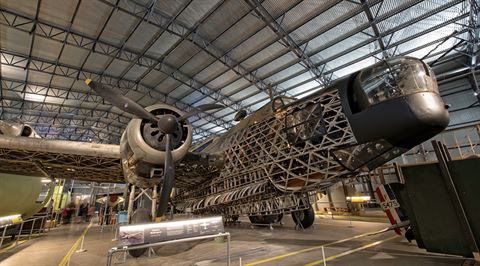
Brooklands Museum, Surrey, UK
By World War II, Brooklands, which had previously been the site of the world’s first motor racing circuit, was used solely for aircraft production. Some of the most innovative military aircraft were made here, and exhibits include the Wellington Bomber. By 1943, 11,461 had been built, and 2,515 were made here. “It was designed using principles developed by Barnes Wallis,” says Lisa Oxborough, collections manager. “The first prototype flew at Brooklands in 1936, and it was the only multi-engine aircraft to fly throughout World War II. Ours is one of two complete Wellingtons in the UK.”
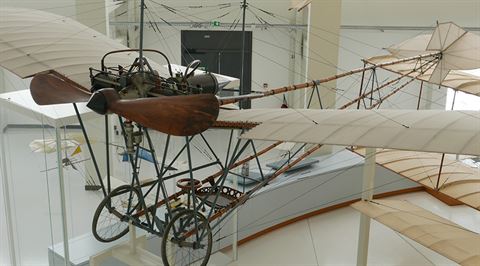
Musée de l’Air et de l’Espace, Paris, France
The enormous Musée de l’Air et de l’Espace covers 150,000sqm and its 19,595 exhibits include a Concorde prototype and the Santos-Dumont Demoiselle plane. Built in 1908, it’s notable because of its bamboo fuselage. “The Demoiselle was the first ‘minimal aircraft’, defined as comprising the least amount of structure and the smallest amount of engine power required to get someone airborne,” says Mick Oakey, managing editor of The Aviation Historian magazine.
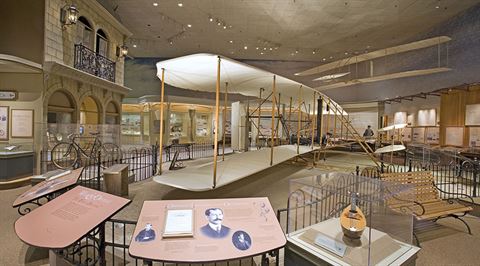
The Smithsonian National Air and Space Museum, Washington, DC, USA
This museum’s 78,000 exhibits include the Bell XS-1, used to break the sound barrier for the first time. But the star of the show is the Wright Flyer biplane used for the Wright brothers’ first flight in 1903. A top tip from museum curator Thomas Paone? Don’t just focus on the plane. “Near the plane is an object that is easily missed – a small card with pieces of fabric and wood from the 1903 Wright Flyer. They were placed on the Apollo 11 mission’s lunar module, which landed on the Moon – a reminder that only 66 years separated the first flight of the Wright Flyer and the lunar landing in 1969.”
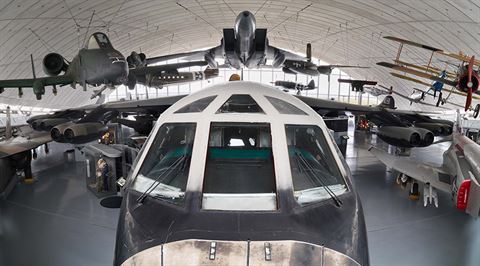
IWM Duxford, Cambridgeshire, UK
Exhibits here include the B-52 Stratofortress, an American subsonic strategic bomber, the Concorde 101 prototype and the PBY-5A Catalina, an amphibious aircraft used by the US Navy. The collection of bomber planes includes an Avro Lancaster Mk.X, and during ‘Inside View’ sessions, visitors can enter the fuselage. “The most famous use of the Lancaster was the ‘Dambusters’ raid, in which Lancasters armed with bouncing bombs breached two German dams,” says Adrian Kerrison, senior IWM curator. “Aviation enthusiasts should check out its 10m bomb bay, which could carry the 22,000lb Grand Slam bomb, the largest conventional bomb dropped by Allies during World War II.”
More from previous issues

The world’s best airport restaurants – picked by chefs
Where and what to eat on the fly, from Barcelona to Bangkok

How to upgrade with Avios
Everything you need to know, from when you can book to calculating your savings

The latest, greatest bag for your next city break
From bash-proof backpacks to trendy totes, join our quest for the best bag for you

A first-timer’s guide: five things I learned in Club World
Newly fledged Bronze Tier Member Hannah Ralph shares her learning curve from our business-class cabin
